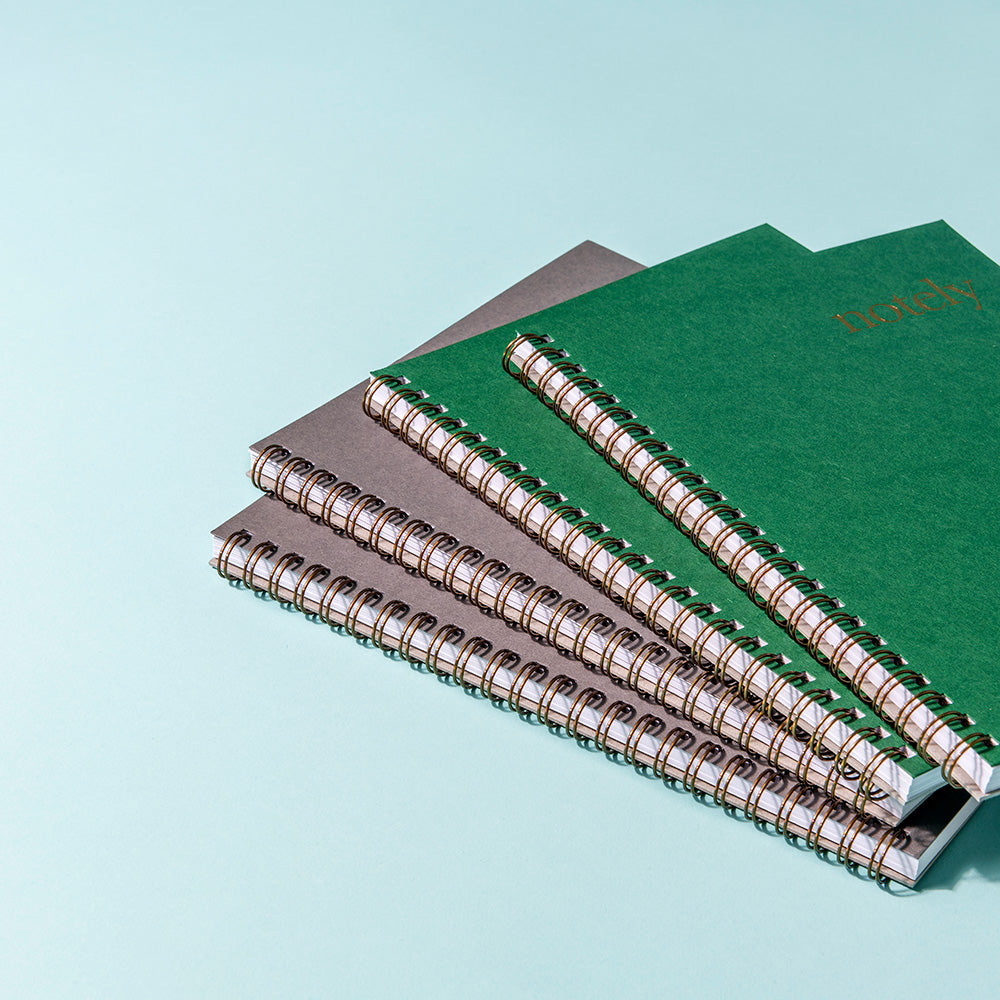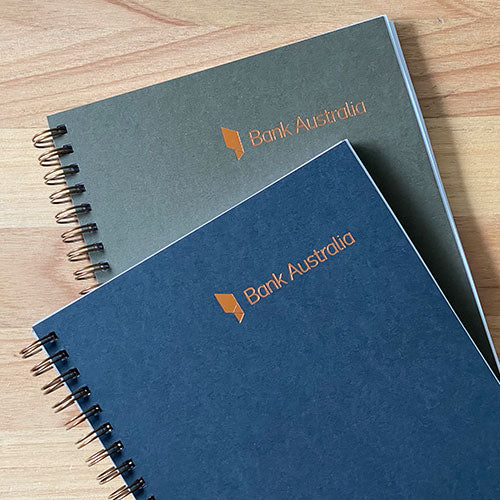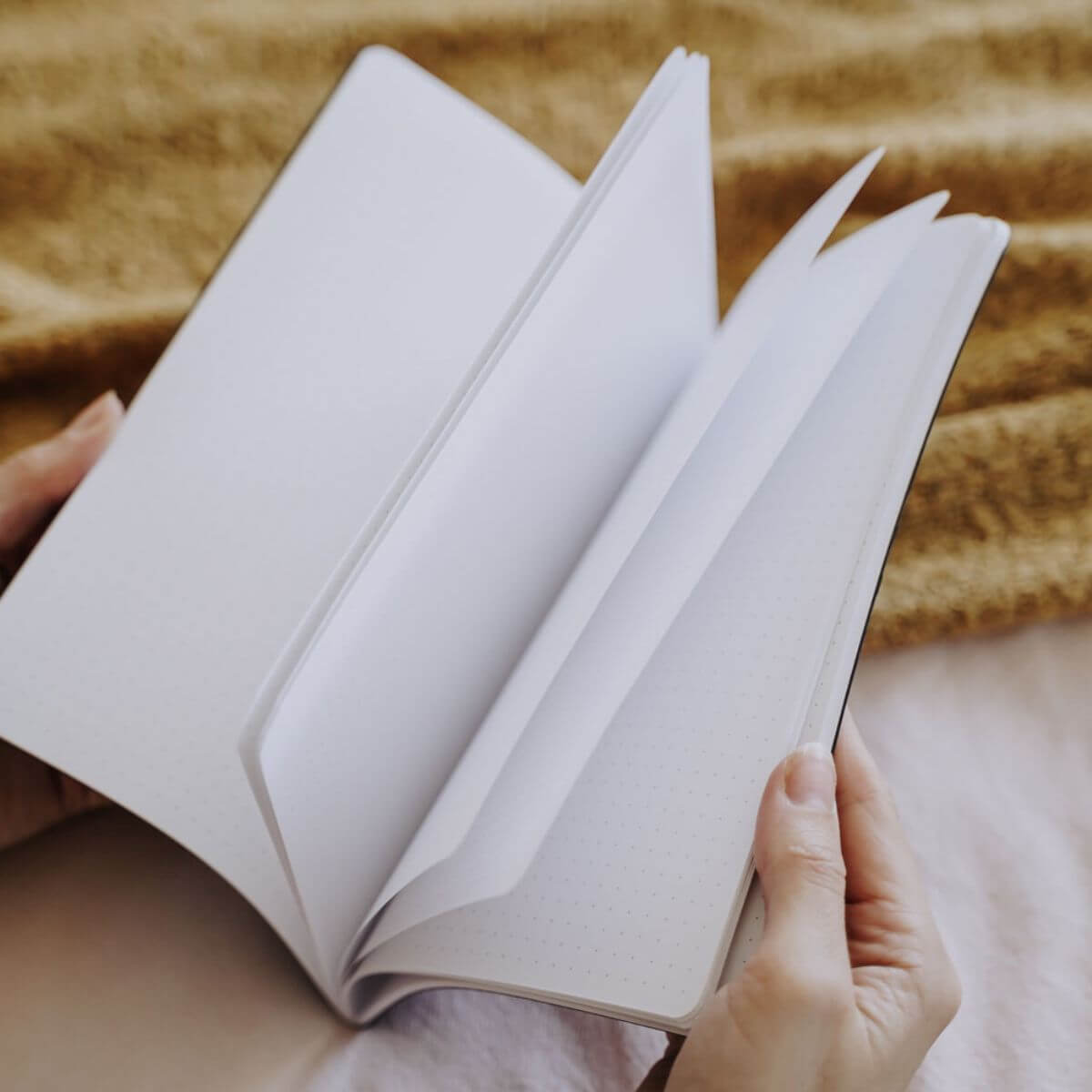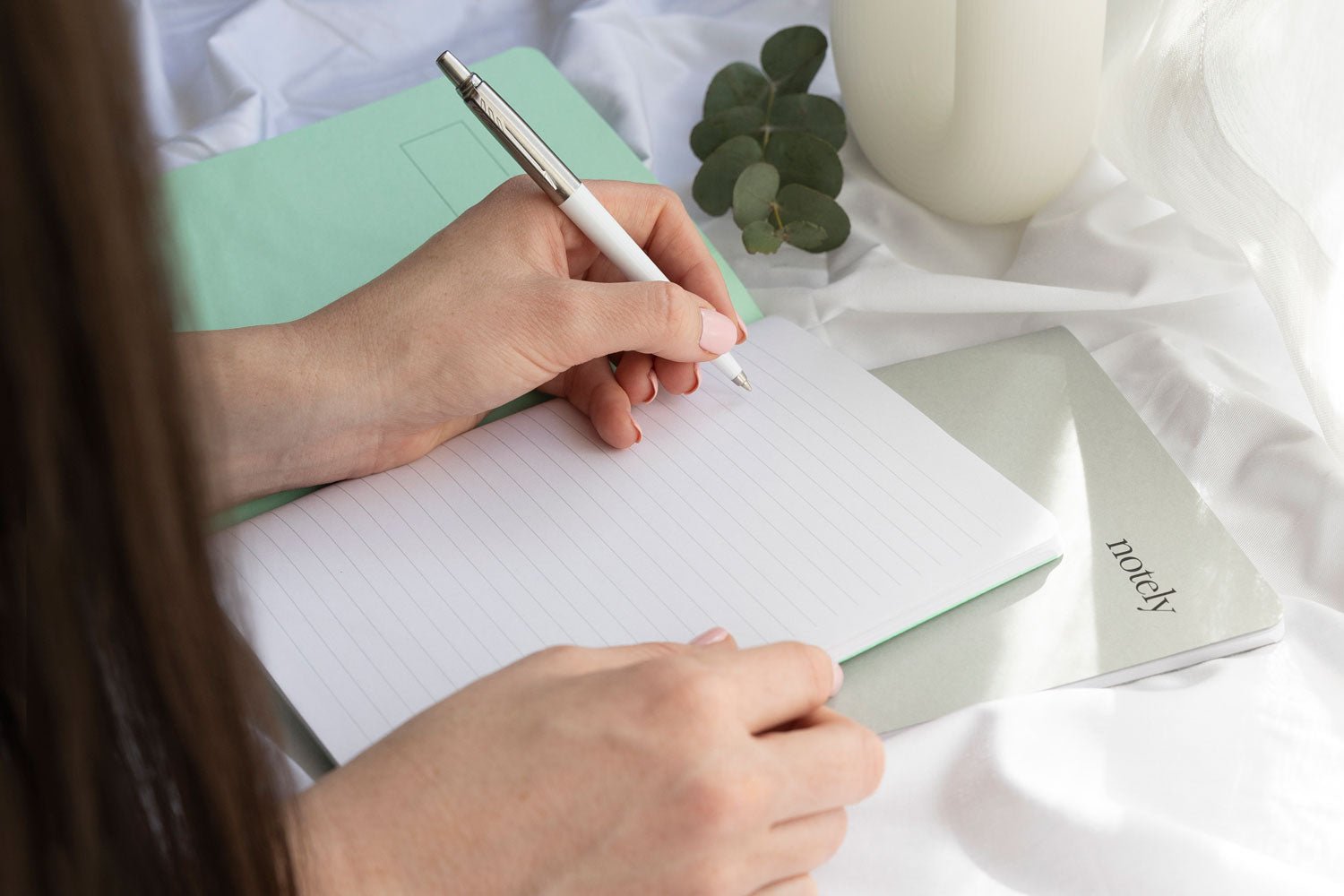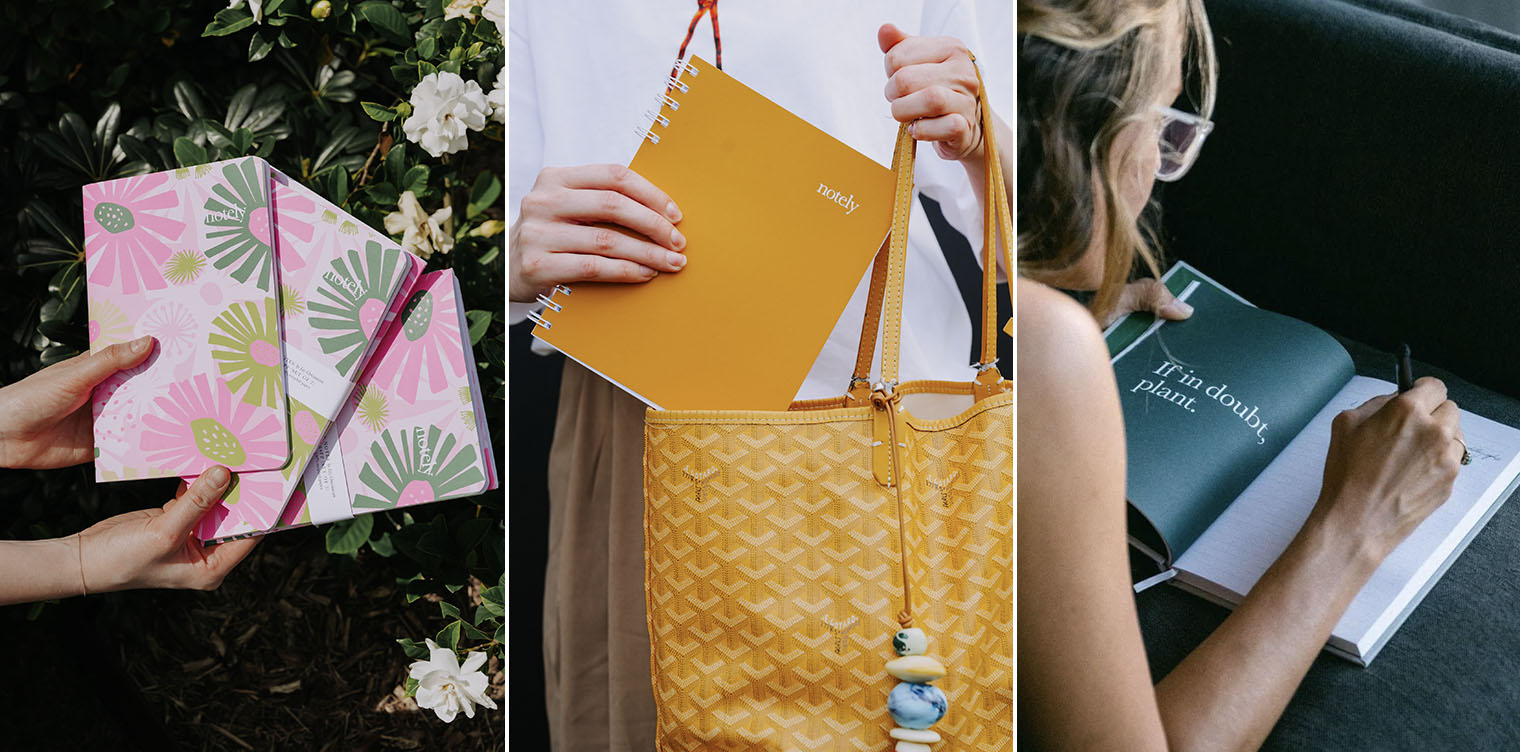Keen to take your journaling experience to the next level?
Your journal or notebook provides a safe space for self-expression and introspection that brings clarity to your relationships, helps overcome burnout and improves your mental health.
Whether you're seeking clarity, creativity, or emotional healing, incorporating double-entry journaling into your daily routine brings a new dimension to this already highly rewarding habit.
What is double-entry journaling?
Double-entry journaling, also known as dual-entry or parallel journaling, involves a powerful two-step introspective process that combines stream-of-consciousness journaling with analysis and reflection.
In broad strokes, you can create a dual-entry journal practice in three ways.
- Divide each page of your journal in two. Use the left for stream-of-consciousness writing and the right column for reflections.
- Devote a page to each process, using the left page for stream-of-consciousness writing and the right one for reflections.
- Use two separate journals – one for stream-of-consciousness, the other for reflections.
Now let’s take a moment to unpack each step of the process.

What is meant by stream-of-consciousness journaling?
Take a look at our blog post on the mental health benefits of journalingto learn more about stream-of-consciousness journaling and see how author Julia Cameron uses this techniquefor gaining clarity and unlocking your creative and problem-solving thought processes.
Julia challenges us to fill three hand-written A4 pages with words that come straight from the heart each morning. There is no right or wrong way to do this. So if you prefer doing them at night or in the afternoon – that’s fine too.
The main thing with stream-of-consciousness writing is to let all your thoughts, feelings and observations flow out onto the page without censorship or structure. Don’t worry about using correct grammar or punctuation, choosing your words, or wondering what to write. Simply let your hand move across the page and let the words flow.
If you feel stuck and unsure what to write – write about that – vent your frustration, anger, disappointment. Likewise, if you’re feeling on top of the world, fill your pages with joy, elation and excitement.
What does the reflection and analysis step involve?
The second step in the dual-entry journaling process is reflection. This is where you revisit what you have written in the stream-of-consciousness entries and attempt to organise, analyse, and derive meaning from these entries through structured prompts, questions, or exercises.
What are the benefits of double-entry journaling?
By combining the freedom of stream-of-consciousness writing with the structure of reflective analysis, double-entry journaling offers a powerful framework for self-exploration, creativity, and personal growth.
Let’s take a closer look at a few of the numerous benefits of double-entry journaling.
Enhanced introspection
By engaging in stream-of-consciousness writing and then reflecting on those entries, double-entry journaling allows deeper self-reflection. In doing so, it provides an opportunity to gain insights into your emotions, patterns of thought, and underlying beliefs.

Discover new ideas and express your creativity
The uninhibited nature of stream-of-consciousness journaling makes it possible to think in new ways. This practice frees your mind from the strictures and limiting beliefs that hold you back.
Through stream-of-consciousness journaling, we are free to play around with new thoughts, language, imagery and ideas; to chase them and see where they lead. This opens up our powers of self-expression, and imagination, giving us the confidence to pursue innovation and artistic endeavours without the pressure of judgement or criticism.
The reflective process in step two, helps us to explore the ideas we’ve come up with and find practical ways to expand on and implement them.
Look at life with greater clarity and insight
Stream-of-consciousness writing is especially good for finding clarity on issues that you feel confused or uncertain about. It allows you to identify recurring themes, uncover hidden motivations, and gain a better understanding of yourself and your experiences.
By simply letting your thoughts tumble onto the page you’ll find the headspace to explore how you truly feel and be free to examine the issue from all angles without preconceived ideas or judgements interfering.
When reflecting on these thoughts and ideas, you’re able to crystallise out the central themes and ideas that you need to focus on in order to achieve your goals and build a life you’ll love.
Vent without self-destructing
If you’ve been through trauma, or you're going through a rough patch at work or in your personal relationships, double-entry journaling will help you to process all the strong and often conflicting and confusing emotions that life stirs up.
Double-entry journaling is a valuable self-care practice that allows you to vent your feelings in a healthy, non-destructive way. Stream-of-consciousness writing in the first step provides a cathartic experience that allows you to release pent-up emotions, express frustrations, and work through challenges.
By reflecting on these entries in the second step, you’ll be able to process emotions constructively and cultivate emotional resilience that will help you get through the tough times.
Dream without restriction
The stream-of-consciousness step of the dual-entry journaling process allows you to express your deepest hopes, dreams and desires without censorship. This step reveals the things your heart yearns for – things that are frequently suppressed by the nay-sayers in our heads and in our lives.
Once these dreams have been revealed to you, you’ll be able to analyse them and put plans in place to make them a reality.
Antoine de Saint-Exupéry, author of The Little Prince, famously said, “A goal without a plan is just a wish.” Likewise, the dreams revealed to you during your stream-of-consciousness entries will remain just that: dreams, unless they are reflected upon.
With conventional journaling methods, you might have journaled about your dream. With double-entry journaling, you’ll not only become more aware of your dreams and desires, you’ll also discover pathways that will help you to fulfil your dreams and live your best life.
In the reflection step, you’ll follow up on these revelations by analysing your dreams and determining the steps you need to take to make those dreams come true.
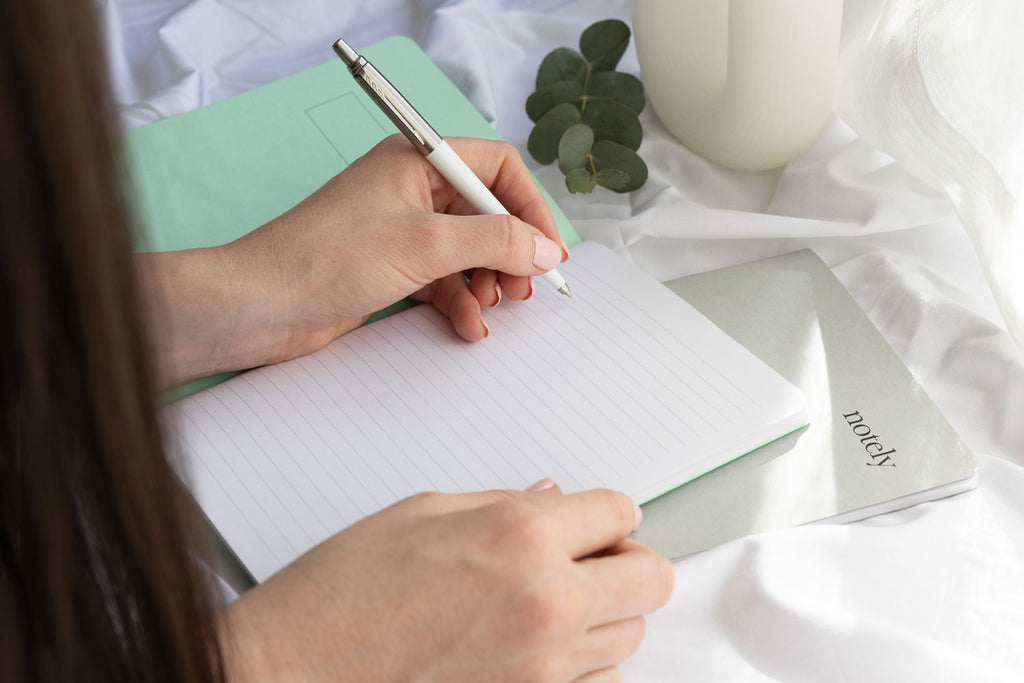
Tips for double-entry journaling
Set aside dedicated time
As with all habits, it’s best to set aside a specific time each day to do your double-entry journaling. If you’re at all stuck and unsure how to get your journaling habit up and running, take a moment to read our article on how to overcome common journaling roadblocks.
Create a safe and inspiring space
This could simply be a comfortable armchair in your living room, a seat in a garden nook or a table at your favourite café. If you’re at home, you could add some special objects, such as crystals, candles or aroma therapy burners, to your space – whatever helps you to feel relaxed and ready to write.
Stay open-minded
Leave your inner critic outside the door and approach double-entry journaling with curiosity and an open mind, allowing yourself to explore new perspectives, challenge assumptions, and embrace growth opportunities.
A good way to do this is to take a couple of minutes to calm your mind before you begin. Do a short guided meditation, or simply close your eyes and take six to eight deep breaths, letting them out slowly, to settle your focus.
Embrace imperfection
This is a biggie! Especially in the stream-of-consciousness step, give yourself permission to be messy. You’ll be amazed at the incredible ideas you come up with once your creativity starts to flow. And the best way to get that happening is to let go of perfectionism and embrace imperfection. Allow yourself to write without judgement, editing, or overthinking, trusting in the process of free expression. Don’t worry if your notebooks or journals are untidy – that’s what they were made for.
Review and revise
Periodically review your entries in both journals, revisiting previous reflections and identifying patterns or insights that emerge over time. Use this information to refine your understanding of yourself and refine your goals.
Use prompts and exercises
A great way to direct your thoughts in the reflection step, is through the use of prompts, questions, or exercises. This will guide your analysis of the stream-of-consciousness entries and help you to extract those valuable insights and ideas from amongst it all.
For example, as you reread your stream-of-consciousness entries, you could ask:
- Are there any behaviour patterns I can identify?
- Does this entry reveal limiting thoughts that I can overcome?
- Does this entry introduce any fresh ideas, thoughts or feelings?
- Have I made any noticeable progress since my last entry?
- What insights can be gained into my growth and development?
- What feelings, thoughts or ideas come up when I reflect on what I’ve written?
- How can I apply the insights I’ve gained to my life?
Choose sustainable stationery
The benefits of stream-of-consciousness writing and double-entry journaling are greatly enhanced by the old-school practice of hand writing your entries.
At Notely, we believe you should be able to take notes, journal and organise your life without impacting the planet. That’s why we supply only the best eco-friendly stationery.
Our journals, A2 and A1 wall calendars, notebooks and card sets offer the best surfaces for doodling, sketching, planning, dreaming and jotting down your most important thoughts – without compromising the environment.
Our sustainable stationery notebooks and journals are made from 100% recycled post consumer waste and contain no virgin paper fibres.
All our Australian stationery products are made from 100% FSC-certified recycled paper and printed with non-toxic plant-based ink using FSC-certified printing methods. Plus, our paper is carbon neutral and created using a completely chlorine-free process. We even have a range of recycled notebooks with covers made from recycled coffee cups and environmentally responsible paper.
For more info on the benefits of using sustainable stationery, check out our article How to journal like a wild thing – and still be kind to the planet.
Most importantly, when you order a recycled notebook or journal from Notely, we’ll plant a tree on your behalf. It’s all part of our mission to replant the planet one note at a time. Every three orders replants 2 sqm of native rainforest. With your help, we’ll reach our goal of replanting 100,000 trees by 2025.

![Spearmint A6 Pocket Notebooks [BULK 8 PACK] - Notely Lined](http://notely.com.au/cdn/shop/products/spearmint-a6-pocket-notebooks-bulk-8-pack-notely-399099_1600x.jpg?v=1699275130)

